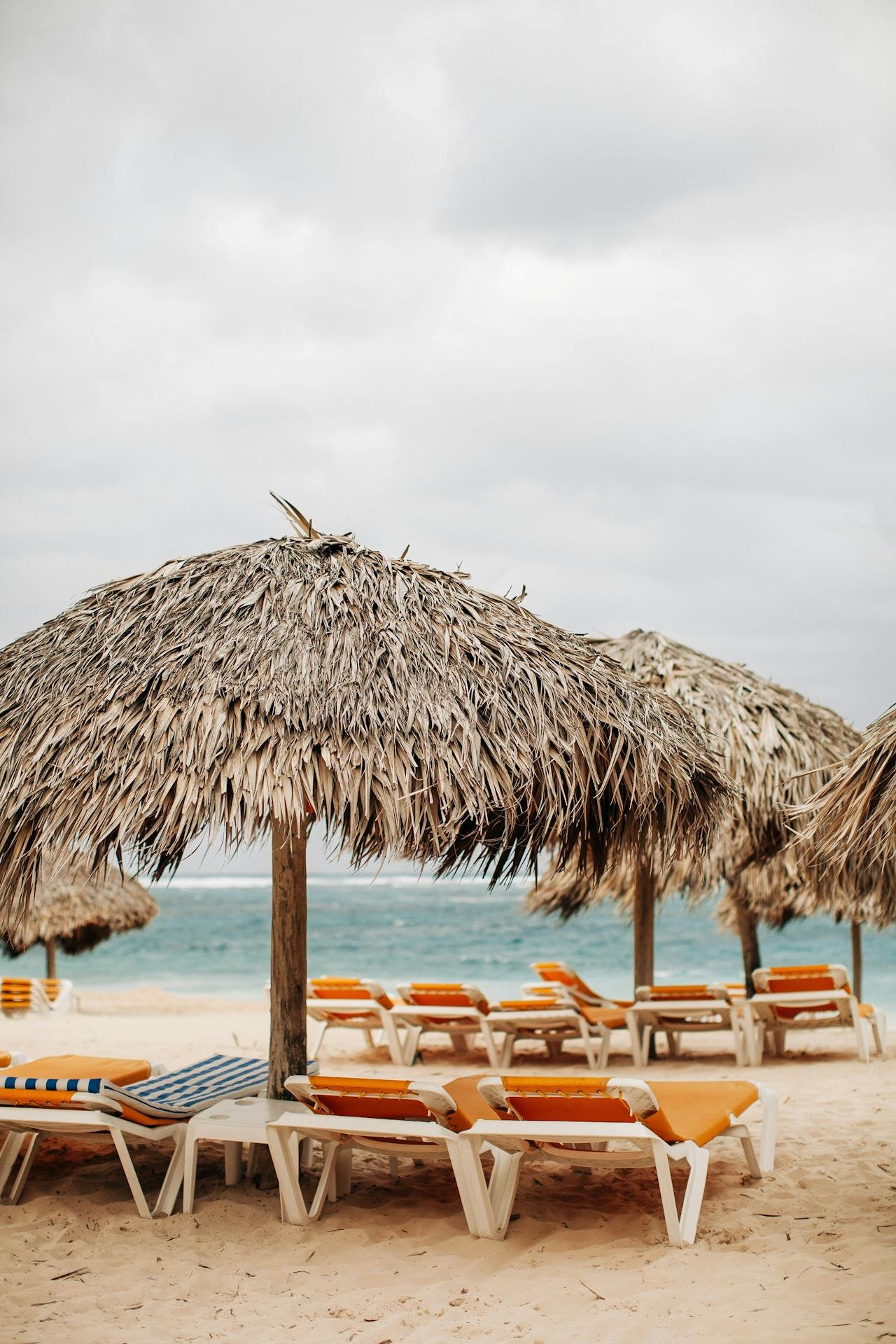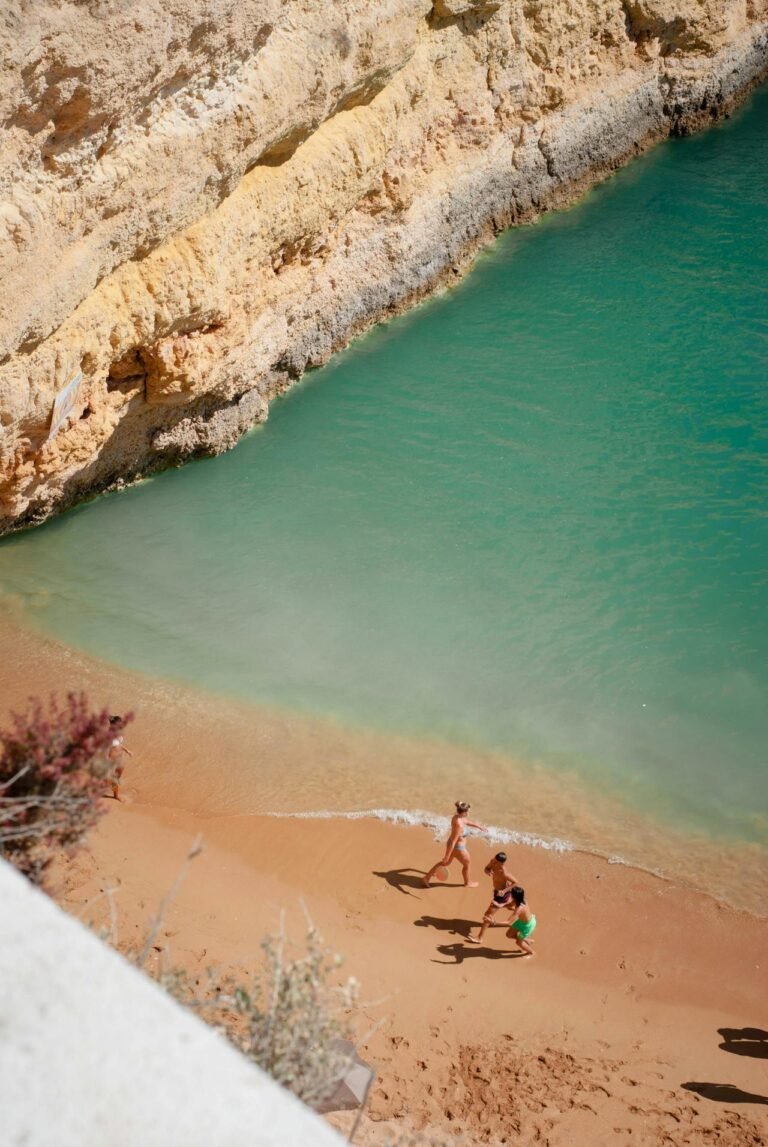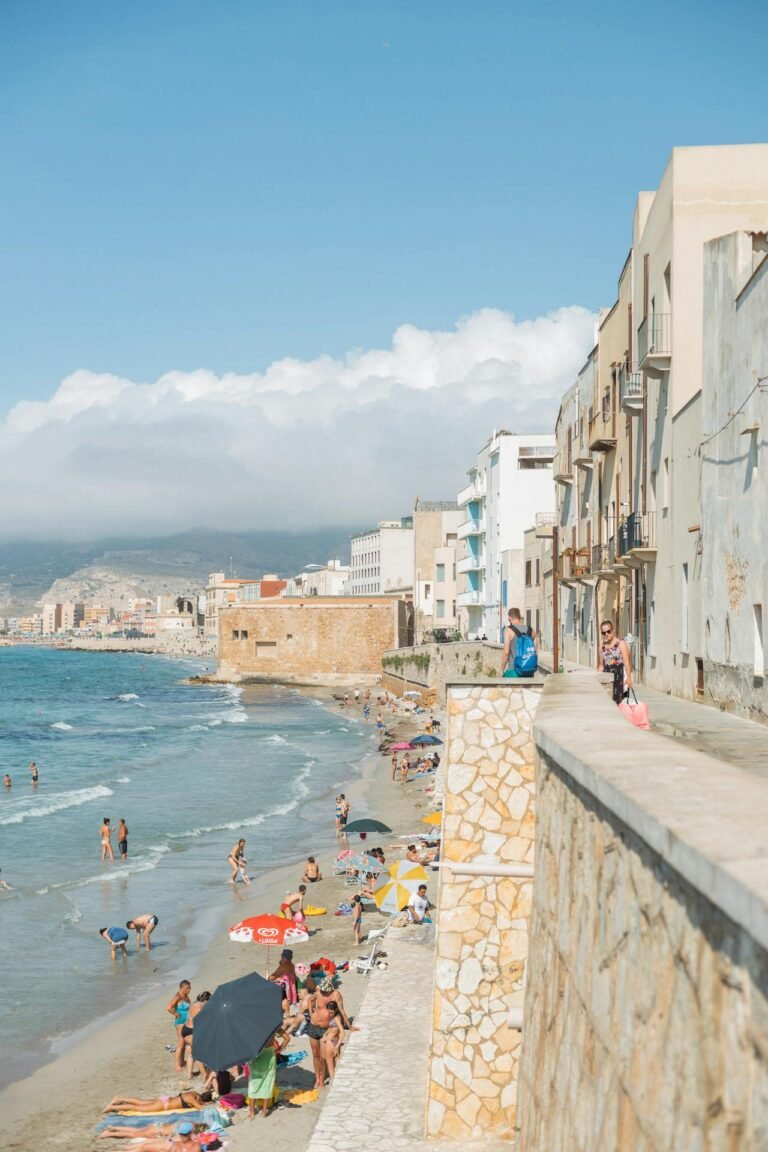Travelers Guide to Coastal Paradises: Discover Your Dream Beach Destinations
As you dream about your next getaway, consider the idyllic charm of coastal paradises that beckon travelers from all around the globe. This guide will unveil breathtaking beaches and hidden gems that offer everything from serene solitude to vibrant beach towns, ensuring you find the perfect spot to unwind.
Whether you’re seeking adventure or relaxation, you’ll discover unique destinations that perfectly match your travel style.
Imagine sinking your toes into soft sand while listening to the soothing sound of waves crashing nearby. From tropical retreats to family-friendly havens, there’s a wealth of options waiting for you to explore.
Get ready to pack your bags and dive into the beauty of these stunning coastal locations.
Join us as we navigate through the world’s most captivating beach destinations, showcasing their distinct allure and what makes each one truly special. With this guide in hand, you’ll be inspired to find your next slice of paradise.
Essential Tips for Coastal Travel
Planning a trip to a coastal paradise involves considering the best times to visit, knowing what to pack, and being mindful of the weather conditions. Here are some tips that will help make your travel experience enjoyable and hassle-free.
Best Time to Visit
When planning your coastal getaway, timing is crucial. The ideal season often depends on your chosen destination. Generally, late spring and early fall offer pleasant weather and fewer crowds.
- Summer: Great for families, but expect busy beaches and higher prices.
- Winter: Offers milder temperatures in some regions, ideal for escaping colder climates.
- Off-Peak: Traveling during off-peak times can save you money and provide a more peaceful experience.
Research local events and festivals, as they may enhance your visit or impact crowd levels.
Packing Essentials for Beach Destinations
Packing effectively can make all the difference in your coastal experience. Here’s a handy list of essentials to consider:
- Swimwear: Pack at least two to rotate while drying.
- Sun Protection: Bring sunscreen with high SPF, sunglasses, and a wide-brimmed hat.
- Beach Gear: Include a beach towel, umbrella, and perhaps a cooler for refreshments.
- Footwear: Flip-flops are great, but consider water shoes for rocky areas.
Always double-check the weather forecast before you pack to ensure you’re prepared for any unexpected conditions.
Understanding Coastal Weather
Coastal weather can vary greatly, so understanding what to expect is vital. Here are key points to consider:
- Humidity: Coastal areas often have high humidity, which can affect comfort levels. Dress in loose, breathable fabrics.
- Forecasts: Check for local forecasts, as storms can develop quickly, especially in summer.
- Tides: Knowing the tide schedule will help you enjoy activities like swimming and beachcombing safely.
Staying informed about the weather can enhance your enjoyment and safety during your visit.
Top Coastal Paradises to Explore
When it comes to coastal paradises, each destination offers unique experiences and stunning landscapes. From tranquil Caribbean beaches to the vibrant shores of Southeast Asia, you’ll find plenty of options to satisfy your wanderlust.
The Caribbean Bliss
The Caribbean features some of the world’s most beautiful beaches. Crystal-clear waters and soft white sands create an idyllic atmosphere perfect for relaxation.
Must-Visit Islands:
- Bahamas: Experience the stunning Exuma Cays with their famous swimming pigs and secluded beaches.
- Jamaica: Enjoy the lively culture, reggae music, and Dunn’s River Falls in Ocho Rios.
- St. Lucia: Explore the dramatic Pitons and relax on the beautiful Anse Chastanet beach.
Each island offers unique accommodations, from luxury resorts to cozy beachfront cottages.
Mediterranean Marvels
The Mediterranean is rich in history and natural beauty. Its coastal towns are known for charming cobblestone streets and breathtaking sea vistas.
Top Destinations:
- Amalfi Coast, Italy: Known for its cliffside villages like Positano and Ravello, offering stunning views and delicious cuisine.
- Santorini, Greece: Famous for its iconic blue-domed roofs and sunsets, it’s a romantic getaway you won’t forget.
- Costa Brava, Spain: Offers vibrant seaside towns and hidden coves perfect for sunbathing and swimming.
Whether you are exploring ancient ruins or savoring fresh seafood, the Mediterranean delights your senses.
Southeast Asia’s Hidden Gems
Southeast Asia boasts stunning, often less-discovered coastal paradises. You’ll find pristine beaches and vibrant marine life that can offer a sense of adventure.
Highlights Include:
- Thailand’s Railay Beach: Surrounded by limestone cliffs, it’s perfect for rock climbing and swimming.
- Indonesia’s Gili Islands: Known for snorkeling and relaxed island vibes, you can easily hop between the three islands.
- Vietnam’s Phu Quoc: Offers tranquil beaches and lush jungles, making it ideal for nature enthusiasts.
These coastal havens provide a blend of culture, relaxation, and adventure.
Pacific Island Escapes
The Pacific Islands present secluded beach options and stunning natural beauty. These islands can feel like true escapes from the everyday hustle.
Key Spots:
- Hawaii, USA: Each island features unique landscapes; for example, Maui offers the scenic Road to Hana, while the Big Island is home to active volcanoes.
- Fiji: Known for its friendly locals, luxurious resorts, and vibrant coral reefs perfect for diving.
- Bora Bora, French Polynesia: Famous for its overwater bungalows and breathtaking lagoon, it’s a picturesque romantic getaway.
In the Pacific, you’ll find paradise and adventure intertwined.
Getting Around
Navigating coastal paradises can enhance your travel experience. Understanding car rentals, public transport options, and island hopping strategies will help you make the most of your journey.
Car Rentals and Driving Tips
Renting a car gives you the freedom to explore at your own pace. Many coastal destinations have rental agencies available, so it’s wise to book in advance during peak seasons.
Driving tips:
- Familiarize yourself with local road rules.
- Ensure your rental has a GPS or download maps offline.
- Be cautious of speed limits, which can vary significantly.
- Look out for wildlife crossing in rural areas, especially at dawn and dusk.
Insurance is crucial; check whether your personal coverage extends to rentals. Enjoy scenic routes, but prioritize safety first.
Public Transport Options
Public transport can be an affordable way to get around. Many coastal regions offer buses or trains that connect popular tourist spots.
Key points:
- Research local schedules online before your trip.
- Consider purchasing multi-day passes for savings.
- Keep cash handy; not all services accept cards.
- Ask locals for tips on the best routes and times to travel.
Using public transport allows you to relax and take in the scenery without the stress of driving. Be prepared for potential delays, especially in tourist-heavy spots.
Island Hopping Strategies
If you’re exploring a chain of islands, planning your journey is essential. Ferries are commonly available and often operate on set schedules.
Tips for island hopping:
- Check ferry timetables ahead of time and book tickets early where possible.
- Consider staying overnight on islands to enjoy more than just a day trip.
- Local tours may offer packages that combine transportation and activities.
Pack light for ease when moving between islands. Renting bikes or scooters at your destination can provide an excellent way to explore once you arrive. Enjoy the adventure!
Cultural Experiences and Etiquette
Embracing local culture enhances your travel experience. Understanding customs, dining norms, and language can lead to meaningful interactions and a deeper appreciation of coastal paradises.
Local Customs and Traditions
Every coastal destination has unique customs and traditions. As you explore, take time to learn about local festivals, religious practices, and ceremonies.
For instance, in some towns, welcoming ceremonies are common. Participate respectfully to connect with the community. Dress codes may differ, so observe locals and choose attire accordingly.
You’ll often find markets bustling with life. These are not just shopping spots but cultural hubs where you can engage with artisans and learn about their crafts.
Remember to ask before taking photos at rituals or festivals, as some locals may prefer privacy.
Cuisine and Dining
Food is a vital part of cultural experiences. Coastal regions often boast fresh seafood and local delicacies that reflect their heritage.
When dining, try to learn about the customs around meals. In some cultures, sharing food is a sign of friendship. Always wait for your host to begin before you dig in, showing gratitude and respect.
Don’t forget to ask about ingredients if you have dietary restrictions. Engage with locals by asking for recommendations on what to try. Popular dishes might include fish stews, tropical fruit salads, or locally sourced grilled seafood.
Using proper dining etiquette, like keeping your hands clean and saying “thank you,” will make a positive impression.
Language and Communication
Language barriers can be challenging but also fun to navigate. Even a few phrases in the local language can open doors to genuine interactions.
Start with greetings and common phrases. Simple “hello,” “thank you,” and “please” can go a long way in building rapport.
Be mindful of non-verbal communication as well. Gestures may vary in meaning; for example, a thumbs-up might be considered rude in some cultures.
Listening is just as important as speaking. Show interest in conversations by maintaining eye contact and responding thoughtfully. This approach fosters respect and connection with locals throughout your travels.
Accommodation Choices: From Budget to Luxury
When planning your stay in coastal paradises, it’s essential to consider the variety of accommodation options available. Whether you’re looking for something budget-friendly or a luxurious escape, you have plenty of choices to make your trip unforgettable.
Beachfront Hotels
Staying at a beachfront hotel offers you direct access to the sandy shores and stunning ocean views. These hotels often provide amenities like swimming pools, spas, and on-site dining options.
Key Features:
- Location: Wake up to the sound of waves.
- Amenities: Pools, bars, and beach services.
- Variety: Range from budget-friendly to upscale options.
Popular choices may include family-run establishments that provide a cozy atmosphere as well as luxury resorts complete with lavish suites. Look for options that offer complimentary breakfast or water sports to make the most of your stay.
Vacation Rentals and Villas
Vacation rentals and villas are ideal for travelers seeking a home-like experience. These accommodations give you the freedom to cook your meals and relax in a private space.
Advantages:
- Space: Ideal for families or groups.
- Kitchen: Save money cooking your meals.
- Personal Touch: Many feature local decor.
You can find charming cottages or modern villas close to the beach. Sites like Airbnb or Vrbo can help you discover unique spaces tailored to your needs, ensuring a memorable stay.
Eco-Lodges and Sustainable Stays
For the environmentally conscious traveler, eco-lodges and sustainable stays offer a way to enjoy natural beauty while minimizing your footprint. These accommodations prioritize sustainable practices and often blend harmoniously with their surroundings.
Highlights:
- Nature Focus: Immerse yourself in natural landscapes.
- Sustainable Practices: Many use renewable resources.
- Community Engagement: Often support local initiatives.
Choosing an eco-lodge allows you to immerse yourself in local culture while respecting the environment. Look for properties that emphasize local sourcing and conservation efforts to enhance your experience while traveling sustainably.
Conservation and Responsible Tourism
As you explore coastal paradises, it’s vital to be mindful of how your travel choices impact the environment and local communities. Embracing responsible tourism can enhance your experience while ensuring the protection of these beautiful ecosystems. Here are some key aspects to consider.
Supporting Local Communities
Engaging with local communities is essential for promoting sustainable tourism. When you choose to stay in locally-owned accommodations or dine at family-run restaurants, your money circulates within the community. Look for opportunities to participate in community-led tours, workshops, or cultural events.
By supporting local artisans, farmers, and guides, you help maintain their livelihoods and promote the preservation of their customs. This connection not only enriches your travel experience but also fosters a deeper understanding of the destination’s culture and its people.
Wildlife Preservation Initiatives
Protecting wildlife is crucial to maintaining biodiversity in coastal areas. Many regions have established conservation programs aimed at safeguarding endangered species and their habitats. You can contribute by participating in awareness campaigns or wildlife volunteering programs.
When you come across marine sanctuaries or national parks, ensure you follow guidelines to minimize your impact. Do not disturb nesting sites for sea turtles or disrupt delicate ecosystems. Engaging in responsible wildlife tourism enhances your adventure and greatly supports these vital conservation efforts.
Eco-friendly Practices for Travelers
Adopting eco-friendly practices can significantly reduce your environmental footprint.
Start by choosing sustainable transportation options. For example, you can bike or walk to explore coastal areas.
When booking accommodations, look for hotels that prioritize eco-certifications and sustainability.
Pack reusable items like water bottles and shopping bags to minimize plastic waste.
Be mindful of your energy and water usage in accommodations, and always follow Leave No Trace principles.
Simple actions from you can help protect the coastal ecosystems you cherish.






